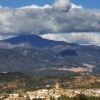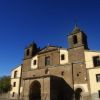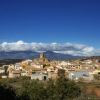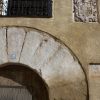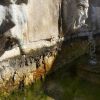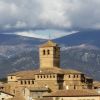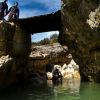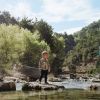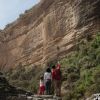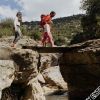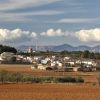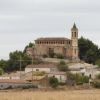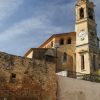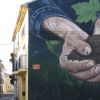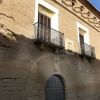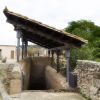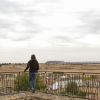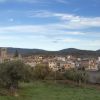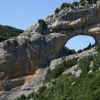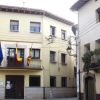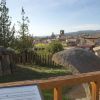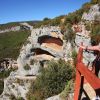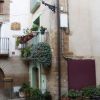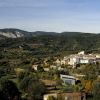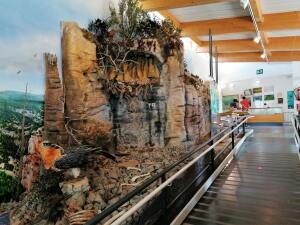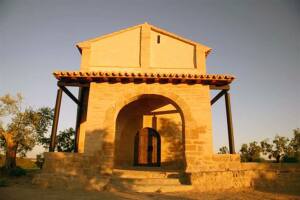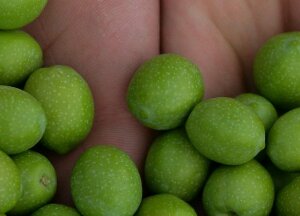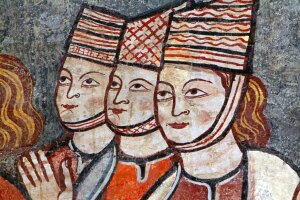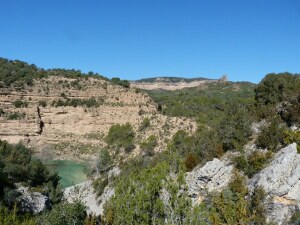PUEBLOS
Abiego
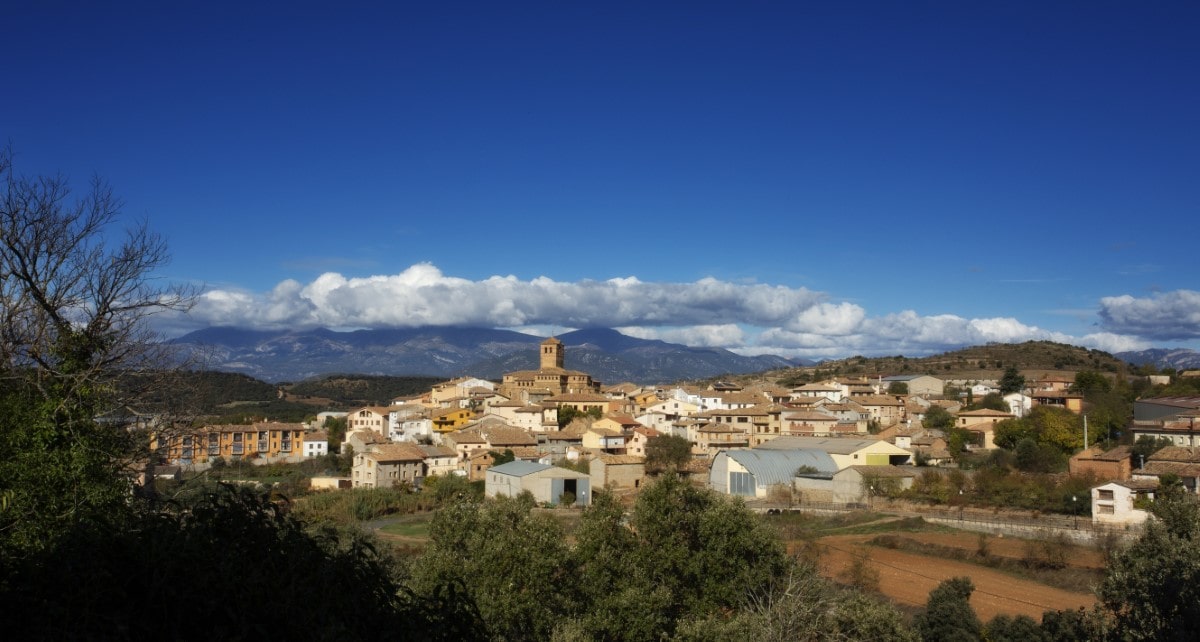
The old part of the town is compact and colourful, and boasts an array of charming traditional houses with walls of brick, stone and clay.
Occuping the highest point of the town is the collegiate church of Santa María la Mayor. Abiego has a public fountain which features a washing and drinking trough built between the 16th and 17th centuries, which is still in use today.
Following the road out of Abiego towards Peraltilla, Ulrik Rükriem’s 20th Century Monument appears in a meadow close to the road around 8km from town.
Arriving into Abiego on the road from Bierge, an interesting collection of fossilized footprints of extinct animals can be seen. The animals passed by this point 25 million years ago, and the prints they left in the mud of the banks of a pool became fossilized with the passage of time.
On top of the hill known as the "Tozal de las Forcas" the Convent of St Joaquín is soon to be converted into a welcoming guesthouse.
Las Almunias de Rodellar
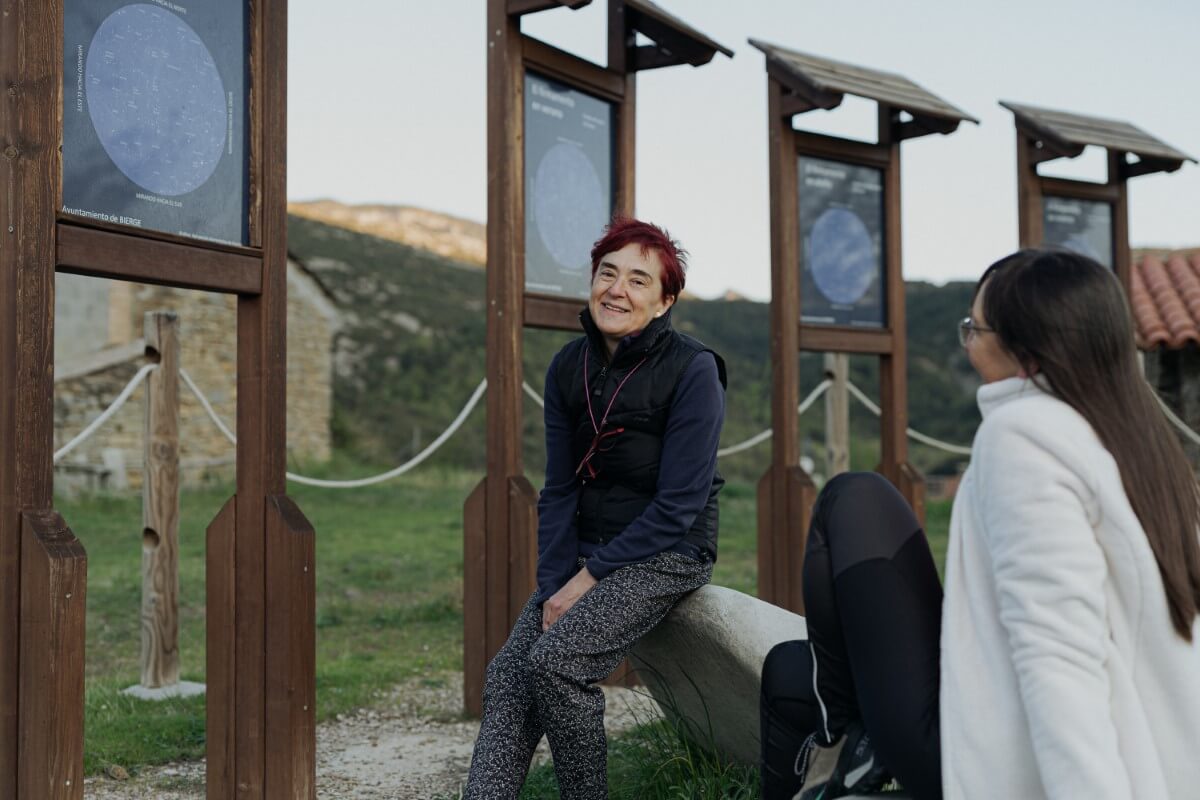
The village of Las Almunias belongs to the municipal council of Bierge.
In the past the centre of the village was more compact than in the current day. The main road that connects Bierge with Rodellar was built in 1931 and it had the effect of dividing the village into two distinct areas; Casa Tejedor, Casa Silverio, Casa O Cubero and the church are in the higher part of the village and lower down on the opposite side of the road are the buildings of Casa Lorenzo, Casa El Molinero, Casa Escartín, Casa Salas, Casa Melchora, Casa Cancer and the school. Casa O Sastre, Casa Juana, La Herreria, Casa Gabarre and Casa Fabianer are all located at the far end of the village away from the road.
The economy of this small village was based on the ideal of self-sufficiency; inhabitants were spoon makers, farm workers, road builders, charcoal burners, shepherds and merchants. From halfway through the 20th century, the collection of truffles began to provide a good complement to the domestic economy.
On the left bank of the River Alcanadre it is possible to still see an old flour mill, which still has the majority of its original machinery. It was ran by millers who lived in Las Almunias who would go down to the mill on a daily basis, being paid in kind for their work; a ration of flour for every batch of wheat ground.
In the 1940s it was converted, along with many other mills of its kind, into a small electricity plant and from then it began to be known as the lucero or “giver of light.” The force of the water was insufficient to maintain both the flour mill and the electricity plant at the same time so wheat was ground during the day and electricity was produced at night. However all production stopped in the 1970s when the village was abandoned.
Nowadays, this delightful hamlet in the Rodellar Valley is home to around 20 inhabitants. Despite the small population, it has a number of tourist establishments such as accommodation and restaurants and also boasts a thriving craft scene with the production of hand-made cheese and ceramics.
Laperdiguera
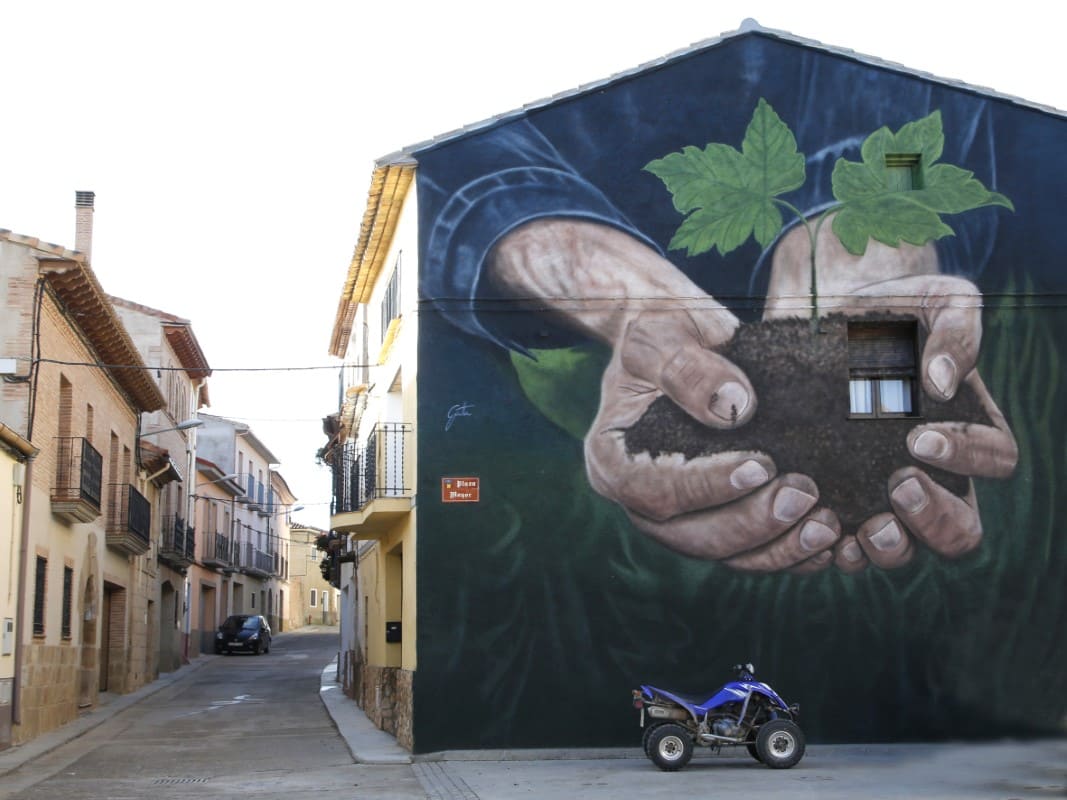
On an extensive plain between the canyon of La Clamor and the River Alcanadre lies Laperdiguera, a town that spreads out at the foot of a small hill. There are beautiful examples of stone and brick houses to be found here, many of which have arched balconies highlighting the flatness of their facades. Casa Cavero stands out amongst them for its elegance; for the quality of its construction; and for having one of the most historic courtyards in Somontano.
A fort once stood on a hill overlooking the town in medieval times, and some of its remains can still be made out. However, almost nothing has survived of the Romanasque church built in the 16th century, which was dedicated to San Pedro and San Pablo. This church consists of a single nave and a polygonal apse. It is covered with a beautiful star-shaped vault of elegant design, with the smooth ribs of the ceiling resting on beautiful decorated stone corbels decorated with dragons and mermaids.
The old castle tower was used as a belfry until the construction of the current bell tower at the beginning of the 20th century; the date is shown on the door as 1911. The decoration of gargoyles, the elegant tracery and the pleasing proportions of the tower give it an overall neo-gothic air, which very few historic buildings in Somontano can claim.
In Laperdiguera an interesting spring well has been recently restored, comprising an open flight of stairs leading to its vaulted chamber.
The annual fiestas are held from the 3rd to 5th of August in honour of San Roque.
The layout of the church follows a model that had been used all over Somontano since the beginning of the 16th century; a nave with two sections and a polygonal east end, all covered with a delightful stellar vault of elegant design.
From the outside the structural simplicity and size are what catch the attention. Made from sandstone, the Gothic doorway is located on the south side of the building and its pointed arch is framed by a series of archivolts and delicate mouldings.
One of the unique features of this building lies in the cantilevers that support the ribs of the vault. Their theme is varied and combines the holy with the profane, the real and the fantastic. Some cantilevers reveal masculine faces while others show a woman in prayer, a winged demon, a mermaid, a friar and an angel carrying a parchment with the Holy Face. Their true meaning is not known but there can be no doubt that they served a specific purpose.
Colungo
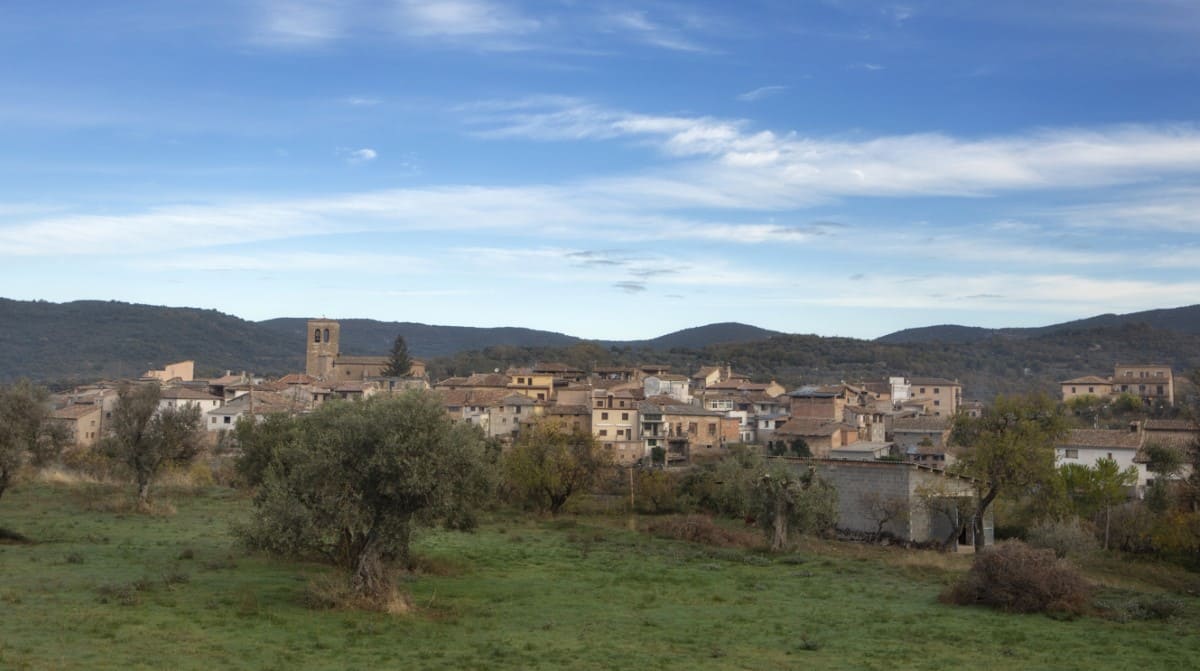
The inhabitants of Asque and Colungo, two small villages that belong to the same municipal council, have traditionally communicated via the Devil’s Bridge, which occupies a spectacular location in the Fornocal canyon.
Colungo is the ideal starting point for excursions and is within easy reach of the bridges that cross the Palomeras and Gargantas Canyons. It is also the perfect viewing point from which to gaze down into the depths of the Fornocal Canyon.A number of historic ancestral houses from the 16th, 17th and 18th centuries can be seen on a stroll through the village centre, including Casa Notario, Casa Broto y Casa Avellanas.
As in many other locations across Somontano, wine that was too acidic to drink was traditionally distilled to make spirit. This tradition has continued and liqueurs are now commercially produced with a range of flavours that include coffee, tea, wild fruit, grape and, the most popular of all, aniseed. This last liqueur in particular has brought fame to village of Colungo. In a place known as the Demba de Nadal on the outskirts of the village there is a magnificent millennial olive tree that locals say was planted by “the Moors.” Despite its age, its owner reaps a fine harvest of olives every year.
The Cave Art Visitor Centre is the perfect departure point for a thrilling journey back in time, experiencing pre-historic life in the Alto Aragon region through the cave paintings of the River Vero Cultural Park.


